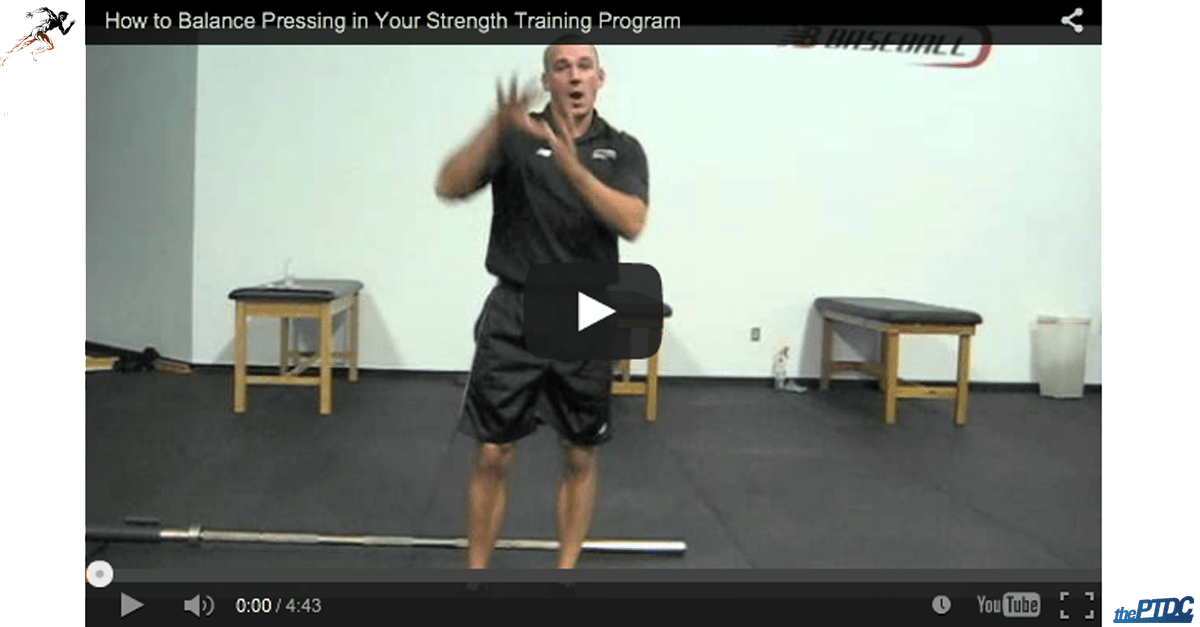From Coach Jon: The following is a guest post from Eric Cressey.
We've always been taught that if you want to have healthy shoulders, we need to "cancel out" our pushing exercises by including plenty of pulling exercises.
This certainly isn't bad advice; given our society's tendency toward hunchback postures, the back definitely needs to be as strong as the front.
However, it's actually important to take things a step further, especially in an athletic population with a solid history of weight training. We actually need to consider top vs. bottom balance, too. Check out the video below for more details:
In most shoulder pain cases, the scapula (shoulder blade/socket) sits too low, and the humeral head (ball) rides up too high.
The former occurs because of a lack of scapular stabilization and really dominant lats, rhomboids, and pec minor, whereas the latter occurs because the rotator cuff isn't up to the task.
If we just bench press all the time - and in doing so, pin our shoulder blades down even further - we exacerbate the problem.
If we incorporate more movements that allow the scapula to freely rotate on the rib cage - especially ones that get the arms a bit more overhead - we create balance in our pressing programs. If you're someone who "geeks out" on the anatomy side of things and likes to think about the muscles in question, what we're really doing is firing up serratus anterior to get our scapula to rotate toward the armpit.
The video above touched on some options you can use to "complement" your bench pressing variations.
But let's expand on it further. Here are some of my favorite options to give you some variety:
1. Push-up Variations
I love push-up variations because they allow the shoulder blades to move freely, and you can even draw some stability from the floor. I like to use the yoga push-up (featured in the last video) regularly with our clients and athletes:
You can also use 1-leg push-ups, band-resisted push-ups, feet-elevated push-ups, and a host of other variations to make them more challenging. And, if you really want to advance them, try a slideboard bodysaw push-up.
2. Landmine Press Variations
Landmine presses are great options, too, because they are done unilaterally (on one side at a time), so you get a better challenge to core stability and they build some good upper back mobility.
This can also be done standing, in a split-stance, or with both knees down. It's all about variety.
3. Cable Press Variations
I like 1-arm cable press variations for many of the same reasons I like landmine press options. Check out the exercise and be sure to pay specific attention to the set-up cues:
4. Overhead Press
Yes, you read this right! Overhead pressing can, in fact, be a healthy inclusion in a shoulder training program, as it directly counters the stiffness many lifters have in their lats, which pull the entire shoulder girdle down. I especially love one-arm overhead pressing variations, and bottoms-up kettlebell work:
Wrap-up
There's nothing wrong with the bench press; heck, I've competed in powerlifting myself! However, like all exercises, it needs to be incorporated in appropriate volume as part of a comprehensive, well-thought-out strength training program. Hopefully you've picked up some new exercises and programming strategies you can employ with the clients and athletes you coach.









